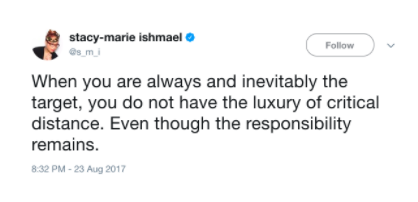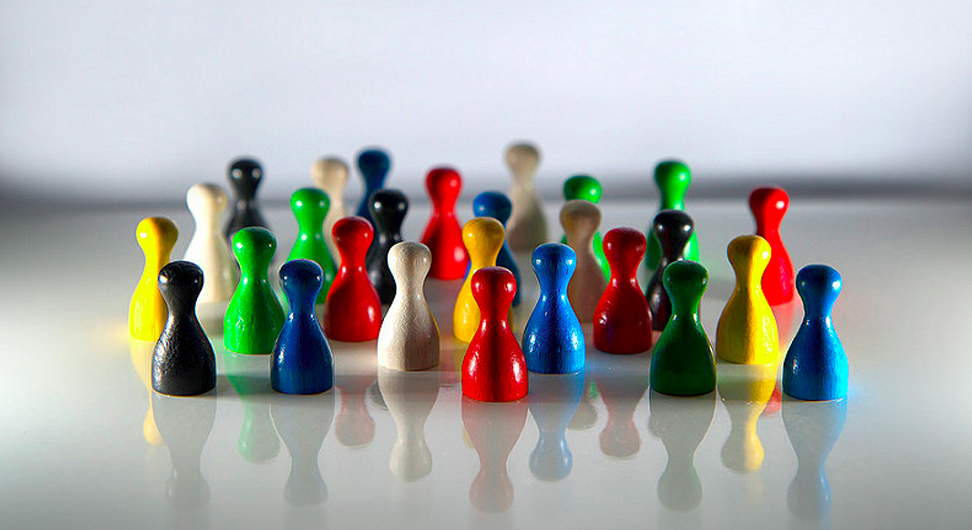The Work Behind Workplace Equality
According to the Atlassian 2017 State of Diversity Report, 83% of tech employees believe diversity is important. However, only half of those employees believe that improvements in this area need to happen at their companies.
We’re all familiar with debates about equality in the workplace, but we’re also familiar with those debates rarely changing the minds of rooms that matter. Imbalance in professional settings becomes more public with each memo, blog post or Twitter thread highlighting the exploitation of disproportionate privilege.
Usually, the response to a public call for more meaningful professional diversity is as follows:
1. An equally public address by a company or CEO
2. Possible legal action
3. An effort to formalize diversity and inclusion by making those things someone’s job
The cycle above is often little more than a series of gestures meant to keep a company’s leadership in the public’s good graces.
The question of equality, in and out of the workplace, is one of empathy. How willing are we to acknowledge society’s inequities and deal with the ugly work of eliminating them?
In 2016, a blog post entitled Reflecting On One Very, Very Strange Year At Uber went viral. This post, written by an engineer named Susan J. Fowler, thoroughly detailed a pattern of sexual harassment experienced by Fowler and other female engineers employed by the company. The manner in which the situation has since been addressed by Uber’s leadership exemplifies the typical three-step strategy above.
First came a performative apology from the company, which was appropriately called out as such.

In keeping with the second step, this matter became a Supreme Court case about arbitration laws a year and a half after Susan J. Fowler’s post gained the public’s sustained attention. It’s worth noting that the debate has shifted to one about the legality of employees pushing back against corporate practices. This debate should actually be a conversation about the culture of harassment prevalent at Uber and many other companies.
Despite a high rate of warranted turnover at the company’s executive level, Uber is still attempting the third step in the prescribed PR-proof cycle. They have hired as the company’s first Chief Brand Officer. While her presence among the leadership ranks of Uber is refreshing, it still all feels like a show.
Before Saint John was at Uber, she was Apple Music’s marketing executive. Her appearance at WWDC 2016 dominated the news cycle for an entire weekend simply because of her presence as a qualified, confident black woman dominating a space typically inhabited by people like Tim Cook and Mark Zuckerberg.
Bozoma Saint John’s navigation of spaces that don’t necessarily embrace her wholeness speaks volumes about her professionalism. She sits on the Girls Who Code board of directors and leverages her position to help more women enter the tech industry. It should feel like a welcome space for everyone regardless of performative actions by organizational leadership.
There is no victory in Uber’s efforts because the reactionary manner in which Saint John is being positioned by the company discredits her actual qualifications and perspective. The victory here is all hers. She has secured multiple influential platforms and she knows how she wants to use them. It shouldn’t be that someone like Bozoma Saint John gets let into the rooms that matter under the circumstances present at Uber. She is more than a prop, as are all people with innovative capabilities and excellent leadership skills.
This nuanced critique of a New York Times profile released about Saint John dissects the idea of a woman being positioned as a brand officer by a male-dominated company. Her celebrity connections and Instagram follower count are emphasized in the profile, but those things wouldn’t necessarily be cited as qualifications for a position branded as “male.” Corporate hierarchies are unfortunately characterized by reinforced sexist biases. Uber is leveraging these biases to put the burden of advocacy and emotional labor on a woman of color. Saint John will speak at TechCrunch Disrupt San Francisco 2017 amid Uber’s defensive maneuvering.
When an instance of professional inequality becomes public knowledge, a performative grimace over coffee in the break room will suffice for some people.
The stories about professional equality that dominate our daily content deluge tend to center on the most high-profile companies. Those companies are primarily invested in securing their profits. They also believe they have a monopoly on how leadership looks, sounds, and behaves.
In order for true empathy to infiltrate such ranks, the leadership class itself needs to become more diverse.
Dissonance among company leaders has a direct impact on employees’ perceptions. In public spaces, a majority of people vocalize the importance of diversity. Privately, however, they may not engage in actions that foster it. When an instance of professional inequality becomes public knowledge, a performative grimace over coffee in the break room will suffice for some people. This is an example of privilege in action. For individuals consistently marginalized by the imbalances that compel occasional public debates, things aren’t so simple.
 Stacy-Marie Ishmael is an advocate of applying tangible practices toward fostering equality. She is a media and tech professional, a woman of color, and a Trinidadian who uses her impactful online presence to critique problematic industry trends. In her tweet above, Stacy-Marie expertly summarizes the burden put upon women, people of color, and LGBTQ individuals in many professional settings. These individuals are constantly tasked with advocating for themselves in the absence of a promise that leadership will actively listen.
Stacy-Marie Ishmael is an advocate of applying tangible practices toward fostering equality. She is a media and tech professional, a woman of color, and a Trinidadian who uses her impactful online presence to critique problematic industry trends. In her tweet above, Stacy-Marie expertly summarizes the burden put upon women, people of color, and LGBTQ individuals in many professional settings. These individuals are constantly tasked with advocating for themselves in the absence of a promise that leadership will actively listen.
Even when advocacy is led by marginalized groups, it must account for the feelings and possibly hostile reactions of its audience. In other words, it has to be perceived as perfectly performed to warrant even minimal action. The struggle to simply be heard impacts work performance, self-efficacy, and the ability of individuals without privilege to gain it in based on their merits.
The Google memo defines diversity initiatives as “discrimination to reach equal representation” that is “unfair, divisive, and bad for business.” This disturbing stance gained traction in circles sympathetic to the author’s viewpoint. A productive societal conversation about equality hinges on us paying close attention to that.
Debates about equality are important precisely because so many gatekeepers in positions of power find the issue debatable. The now-infamous 10-page Google memo released in early August 2017 highlights several reasons why these conversations matter. It was written by a white, male software engineer who felt intruded upon by his company’s diversity initiatives. He specifically focuses on gender, declaring things like “We need to stop assuming that gender gaps imply sexism.” This minimizes the idea that female job-seekers are systematically kept out of meaningful tech jobs by people that look and sound like the author of this 10-page “oppression” manifesto.
The Google memo defines diversity initiatives as “discrimination to reach equal representation” that is “unfair, divisive, and bad for business.” This disturbing stance gained traction in circles sympathetic to the author’s viewpoint. A productive societal conversation about equality hinges on us paying close attention to that.
Even when marginalized individuals manage to secure positions in privileged spaces, they are often forced to leave due to undeniable hostility and exclusion. In this powerful Atlantic piece entitled I Was A Muslim In Trump’s White House, former National Security Council staff member Rumana Ahmed details her experience under an administration that quickly became openly hostile toward her. She lasted only eight days under her new management because that eighth day marked the introduction of a travel ban affecting people from seven Muslim-majority countries and all Syrian refugees.
The ban was nothing short of nationalistic exclusion by proposed legislation. Rumana couldn’t rationalize passively supporting it by continuing in her professional role. She had originally decided to stay on following her years with the Obama administration in order to provide a personal perspective on the lives of Muslims. In the words of the author:
“I am a hijab-wearing Muslim woman—I was the only hijabi in the West Wing—and the Obama administration always made me feel welcome and included.
The White House was Rumana’s workplace, just like any office or coworking space.
Ideally, Rumana’s presence would have been treated as valuable by advisors lacking her specific insights. Instead, no-one bothered to consult Rumana regarding the travel ban or its implications. Even as someone walking the halls of the White House, she felt just as surprised and disappointed as most of the country did when news of the ban broke. Even though Rumana’s intentions were good, there was no space for her to act on them.
The White House was Rumana’s workplace, just like any office or coworking space. Her coworkers were the other members of the National Security Council, and her story proves that inclusion is not just a to-do list item or a matter of physical presence. This instance of exclusion also highlights the burden of being the only one advocating – or attempting to advocate – for your wholeness to be recognized. Rumana’s skills and empathy are now no longer a part of what governs the United States. The government has, in some ways, taken a path similar to the one major corporations have chosen.
Working toward true equality begins with amplifying marginalized voices.
Equality, both in and outside of the workplace, is really about empathy. How willing are we to embrace the experiences of others, acknowledge society’s inequities, and deal with the ugly work of eliminating them? Real people are affected by the crawl toward true equality every day. There is a palpable call for change among millennials and people who will be society’s key stakeholders in a few decades, but the passage of time will only reinforce our comfortably complacent routines.
Working toward true equality begins with amplifying marginalized voices. The next steps involve leaders echoing that amplification, taking real risks, and fostering leaders that represent more of society. We can all do more to value one another, and it’s the smallest decisions that create a climate of acceptance.
This work is licensed under a Creative Commons Attribution-ShareAlike 4.0 International License.


